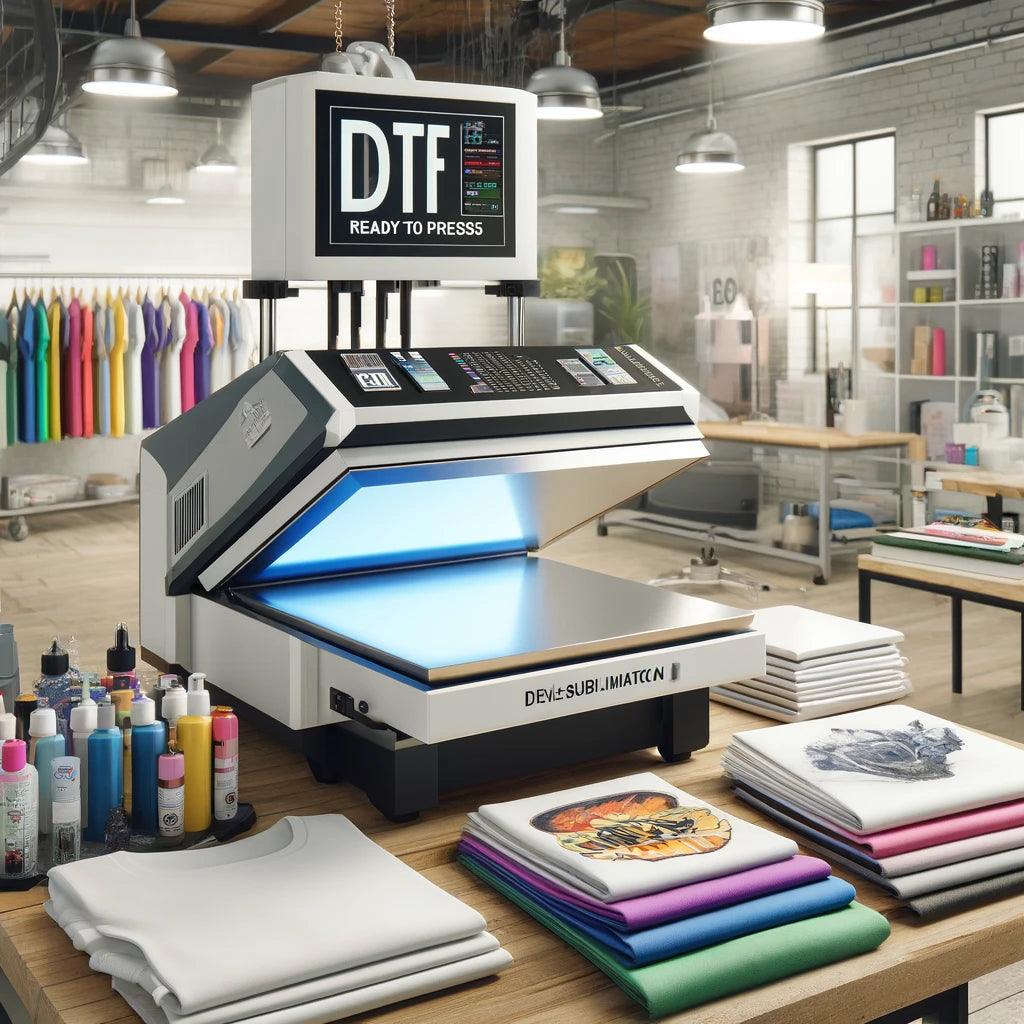
The Ultimate Guide to DTF Transfers: Everything You Need to Know
Introduction
I

n the ever-evolving world of print technology, Direct to Film (DTF) transfers are revolutionizing the way we think about fabric printing. Unlike traditional printing methods that often require specific fabric types or colors, DTF transfers offer unparalleled versatility and ease of use. This comprehensive guide explores the nuances of DTF transfers, including what they are, how you can create them at home, their durability, and whether a regular printer can be repurposed for DTF printing.
What Does DTF Transfers Ready to Press Mean?
Direct to Film (DTF) transfers ready to press refer to a pre-prepared transfer method where designs are printed onto a special film and then transferred onto fabric using heat and pressure. This innovative technique bypasses many limitations of direct-to-garment (DTG) printing, allowing for vibrant prints on a wide variety of textiles. The "ready to press" aspect signifies that the transfer is pre-printed and only needs the application of heat to be affixed to the garment, making it a convenient option for both businesses and hobbyists alike.
Key Components of DTF Transfers
- The Film: A specific type of film is used as the base for the print.
- The Ink: Special DTF inks are used to ensure the design is vibrant and long-lasting.
- The Powder: A unique adhesive powder is applied to the ink before curing, which helps the design adhere to the fabric.
The Process
- Printing: The design is printed in reverse on the film.
- Powdering: Adhesive powder is applied to the wet ink.
- Curing: The film goes through a curing process to dry the ink and melt the powder.
- Pressing: The film is then placed onto the fabric, and heat is applied to transfer the design.
Can I Print DTF Transfers at Home?
With the right equipment, it is entirely possible to print DTF transfers at home. The process requires a dedicated printer, DTF inks, the appropriate film, and a heat press. While the initial setup cost can be significant, printing DTF transfers at home offers a level of flexibility and creativity not easily matched by outsourcing.
Necessary Equipment
- DTF Printer: While specialized DTF printers are available, some high-quality inkjet printers can be converted for DTF use.
- DTF Inks and Film: These are specific to the DTF process and can be purchased from specialized suppliers.
- Heat Press: A good quality heat press is essential for the transfer process.
How Long Do DTF Transfers Last?
The durability of DTF transfers is one of their most appealing attributes. When properly applied, a DTF transfer can last as long as the garment itself. The key factors influencing the longevity of DTF transfers include the quality of the materials used (ink, film, and powder), the fabric type, and adherence to proper washing instructions. Generally, DTF prints can withstand numerous washes without fading or peeling, making them ideal for both commercial and personal use.
Maintenance Tips for Longevity
- Washing: Turn the garment inside out before washing in cold water.
- Drying: Tumble dry on low or hang dry to prevent heat damage.
- Ironing: If necessary, iron on the reverse side of the print or use a protective layer.
Can I Print DTF on a Regular Printer?
Converting a regular inkjet printer into a DTF printer is possible but comes with several caveats. The printer must be capable of handling the DTF inks and film, which not all models are suited for. Additionally, the conversion process may involve significant modifications and can void the printer's warranty.
Steps for Conversion
- Ink System Modification: Replace standard ink cartridges with DTF-specific inks.
- Software Adjustments: Update the printer’s software settings for DTF printing.
- Maintenance: Regular cleaning and maintenance are crucial to prevent clogging and ensure print quality.
Conclusion
Direct to Film transfers are changing the game in fabric printing, offering an accessible, versatile, and durable solution for creating vibrant designs on various textiles. Whether you're considering DTF printing for personal projects or commercial endeavors, understanding the process, equipment, and best practices is crucial to achieving high-quality results. With the possibility of setting up a DTF printing operation at home and the durability of the prints, DTF transfers present an exciting opportunity for creativity and innovation
